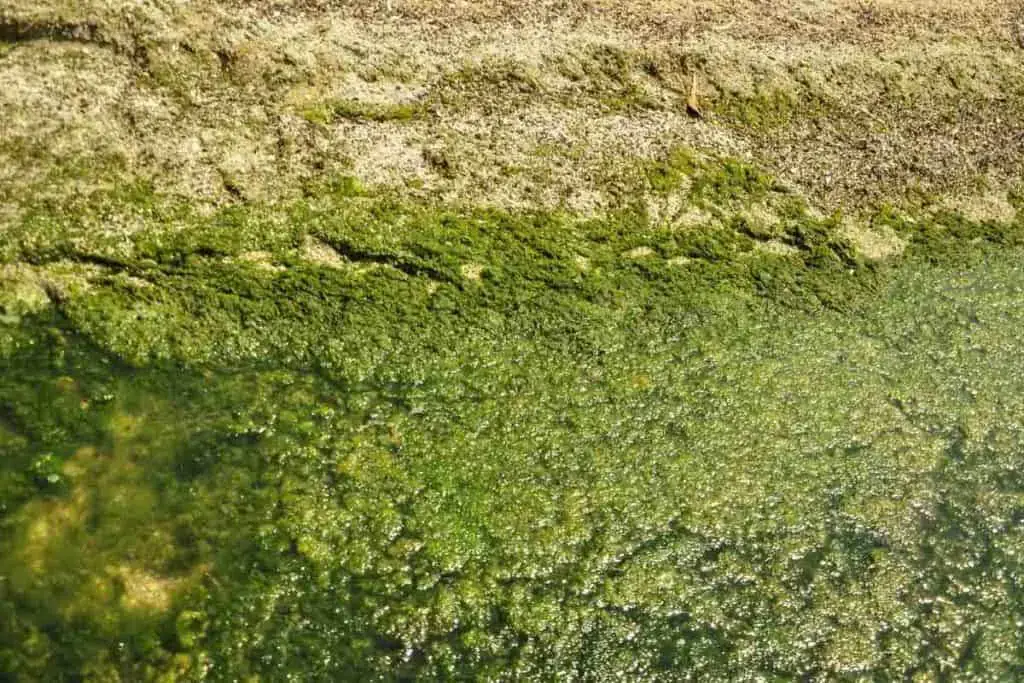Is Algae A Protist? Algae are a type of aquatic plant that can be found all over the world. And although they are often considered to be simple plants, algae are actually very complex organisms.
There are more than 30,000 different species of algae, and they come in a wide variety of colors, shapes, and sizes. However, one question that many people often debate is whether or not algae are protists.
In order to understand this question, it is important to first know what protists are. So in this article, we will take a closer look at what protists are and whether or not algae fall into this category.
What Are Protists?
Protists are single-celled eukaryotic organisms that can be found in nearly all environments on Earth. Eukaryotic cells are those that contain a nucleus, which is surrounded by a nuclear membrane.
Eukaryotic cells also contain organelles, which include mitochondria, Golgi bodies, and endoplasmic reticulum. “cellular energy exchangers” that have a canal-like structure of membranes within the cell.
Protist organisms can be either autotrophic or heterotrophic!
- Autotrophic: Autotrophic protists use sunlight to produce their own food. They have chloroplasts in their cells which contain chlorophyll, which absorbs sunlight and uses the energy to convert water and carbon dioxide into glucose (sugar). This process is called photosynthesis. Heterotrophic protists do not have chloroplasts,
- Heterotrophic: Many heterotrophic protists are parasitic, living off of other organisms for food. These protists often have specialized structures, such as flagella or cilia, that allow them to attach to their hosts. Other heterotrophic protists are free-living and live in moist environments where they can obtain food from decomposing organic matter.
So, now that you know what protists are, let’s take a look at whether or not algae are classified as protists.
You May Also Like To Read:
Is Green Algae A Protist?
Yes, green algae is a single-celled and multi-celled organism classed as a protest. Like most protist organisms, algae are eukaryotic and contain three types of double-membrane-bound organelles, nucleus, chloroplast, and mitochondrion.
Algae are typically autotrophic, meaning that they use photosynthesis to produce their own food from sunlight and carbon to generate carbohydrates and oxygen.
This ability to produce its own food makes algae a very important part of the ecosystem! While most protists are microscopic, algae can also range in size from microscopic to macroscopic that can reaching up to (200 feet) in length.
Key Features That Classifies Algae As A Protist:
- Contains Nucleus, Chloroplast, And Mitochondrion
- Photosynthesis To Produce Their Own Food
- Single-Celled And Multi-Celled Organism

Is Blue-Green Algae A Protist?
No! Blue-green algae “Cyanobacteria” is not a protest! This is because they are prokaryotic, and not eukaryotic. Organisms that are prokaryotes don’t have nucleus in their cells and are more closely related to bacteria than they are to plants!
Blue-green algae are microscopic, however, they can be seen in bloom or in a colony. They also produce toxins called microcystin, which can be harmful to surrounding wildlife, especially fish.
While blue-green algae can look very similar to protist algae, they are not the same thing!
However, one thing they both have in common is they produce their own food through the process of photosynthesis, using sunlight, oxygen, and nutrients.
You May Also Like To Read:
Is Red Algae A Protist?
Yes, Red algae is a type of “Autotrophic” protist that belongs to the Rhodophyta phylum and Class Rhodophyceae. There are over 6,000 species of red algae, which are distinguished by their reddish pigment.
Red algae gets its name from the reddish or purple pigments that are found in its cells. These pigments absorb blue light, which helps the algae to thrive in deep water where other plants cannot grow.
They are found in great depths in oceans and they range in size from microscopic single-celled organisms to giant kelp that can reach over 100 feet in length.
Red algae are also an important source of food for many marine creatures, and they also play a role in the global carbon cycle.
Is Brown Algae A Protist?
Brown algae is a type of protist, which is a broad category of single-celled or unicellular organisms. While most protists are aquatic, brown algae are unique in that they are typically found in low-light conditions.
These organisms get their name from their brown color, which is caused by the presence of a pigment called fucoxanthin. This pigment helps the algae to absorb light in low light conditions.
Brown algae are typically found in marine environments, and they range in size from microscopic single-celled organisms to giant kelp that can range in size from 1 to more than 100 meters.
Brown algae are autotrophic, which means they produce their own food through the process of photosynthesis.
You May Also Like To Read:
Other Types Of Algae Protists?
So now we know that there are three main types of algae protists, but what about the other types? There are in fact, several other types of algae that are protists, and each one contains a variety of different organisms.
There are many other types of algae protists, including:
- Diatoms
- Euglenoids
- Golden Algae
- Flagellates
Each type of protist has its own unique characteristics, but they all share the common trait of being eukaryotic organisms.
Final Thoughts
So there you have it! As you can see not every type of algae are protist, However, the ones that are, play an important role in the global ecosystem!
Protists are a fascinating and diverse group of organisms, and there is still much to learn about them. Thanks for reading!
You May Also Like To Read: